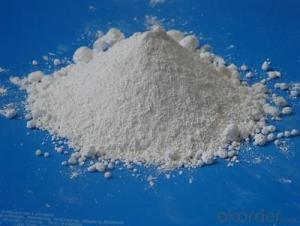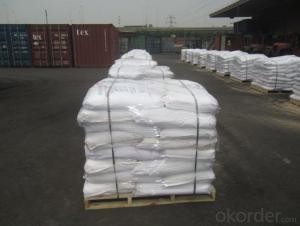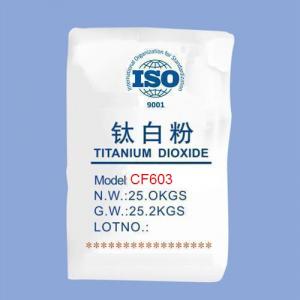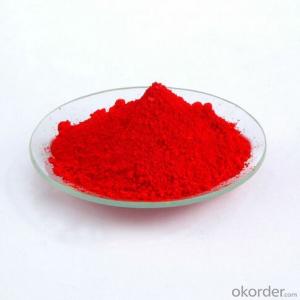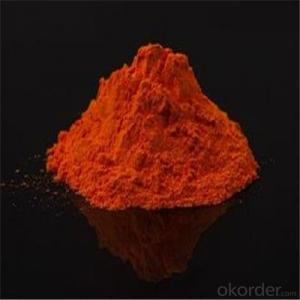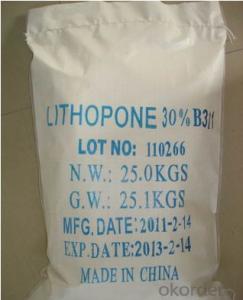Pigment chemical lithopone pigments factory direct sell
- Loading Port:
- Tianjin
- Payment Terms:
- TT OR LC
- Min Order Qty:
- 20 m.t.
- Supply Capability:
- 2000 m.t./month
OKorder Service Pledge
OKorder Financial Service
You Might Also Like
Specifications of lithopone pigments for plastic
lithopone pigments
1,good quality and reasonable price
2,free sample
3,SGS,BV,CIQ inspection.
Pigment chemical lithopone pigments for plastic
1. Product name: Lithopone
2. Chemical formula: ZnS+BaSO4
3. Other Names:Barium zinc sulfate
4. CAS No.: 1345-05-7 H.S. Code: 3206421000
5. EINECS: 215-715-5
Appearance: A white, odorless powder. Insoluble in water. It’s has good whiteness and envelop ability.
6. Properties: This product is a kind of new-style nontoxic. Green non-pollution, lithopone than traditional lithopone albedo high, hiding power, fineness and high-temperature weatherability, strong characteristic.
7. Application: Mainly used of coatings, printing ink, rubber, plastic, powder, profiles, paint, paper, and leather, etc.
8. Package:25kgs/PP bag,25MT/20’FCL
Technology Data:
ITEM | Specification | |
B311 | B301 | |
Total Zinc and Barium Sulphate %≥ | 99.0 | 99.0 |
Zinc Sulfide Content %≥ | 30.0 | 28.0 |
Zinc Oxide Content %≤ | 0.3 | 0.6 |
Tinter Reducing Power, Compared with Standard Samples ≥ | 105 | 100 |
105°C Volatile matter %≤ | 0.3 | 0.3 |
Water solubles %≤ | 0.3 | 0.4 |
Water suspension Ph-value | Neutral | 6.0-8.0 |
Oil absorption,g/100g≤ | 6.0-8.0 | 14 |
Residue on sieve 45um %≤ | 5 | 5 |
9. Payment: T/T, L/C
10. Packing picture:


- Q: What pigments are used in photosynthesis?
- Chlorophyll(green) is the primary pigment used in photosynthesis. Besides chlorophyll, plants also use pigments such as carotenes(orange) and xanthophylls(yellow).
- Q: Please help me answer these Genetics problems. These are the problems that was assigned in the previous exams, but the professor doesn't provide the answer keys or a review session to go over these.Pigment in the mouse is produced only when the C allele is present. Individuals of the cc genotype have no color. if color is present, it may be determined by the A, a alleles. AA or Aa results in the agouti color, while aa results in the black color. In 3 crosses between agouti females whose genotypes are unknowns and males of the aacc genotype, the following phenotypic ratios were obtained. Female 1: 8 agouti 8 colorlessFemale 2: 4 agouti 5 black 10 colorless
- interior the 1st bypass AACC x aacc, discern a million will produce all AC gametes and discern 2 ac. Your F1 will all be AaCc. As all have the C allele they are going to be pigmented and as they're Aa they're going to all be agouti. Your F1 bypass is AaCc x AaCc. each and each discern can produce 4 gametes AC, Ac, aC, ac. To get all the genotypes you would be able to desire to entice a 4 x 4 Punnett sq.. each and each column and each and each row has between the 4 gametes in it and the cells comprise the blended genotypes. in case you count type up your genotypes you will discover 9 comprise the two A and C, those are agouti, 4 comprise cc, and all of those would be white regardless of the genotype at A, 3 comprise aa and C, those will all be black. So your phenotypic ratio would be 9:4:3 agouti: white: black the subsequent 3 crosses are all attempt crosses - you employ a recessive discern to artwork out the genotype of the different discern. a million. As lots of the offspring are colourless, you be attentive to that the two mothers and dads carry the c allele, as you pick cc for colourless mice. As there are no black mice, there is not any a allele interior the mum, as no aa offspring are produced. The bypass is AACc x aacc. woman gametes are AC or Ac and male gametes are all ac, offspring are the two AaCc or Aacc. 2. Is the opposite of bypass a million. There are black offspring so mom would desire to hold an a allele to furnish black mice, as there are no colourless ones, there is not any c allele interior the mum. you could write down the bypass and the F2 effect now. 3. This time all hues are produced, so the mum would desire to hold the two a and c alleles. Her genotype is AaCc, she would be able to offer 4 gametes as interior the 1st bypass and you will artwork out the resultant genotypes and phenotypes interior the F2.
- Q: There was a question, not to long ago, that asked are L'oreal HIP pigments good? What are pigments?
- Pigments are tones. Like if you have a base color of white and add a light pink and as you go down it gets darker. There would be several pigments of pink tones.
- Q: What does the word pigment mean?
- ? PIGMENT (noun) The noun PIGMENT has 1 sense: 1. dry coloring matter (especially a powder to be mixed with a liquid to produce paint etc) Familiarity information: PIGMENT used as a noun is very rare. ? PIGMENT (verb) The verb PIGMENT has 2 senses: 1. acquire pigment; become colored or imbued 2. color or dye with a pigment Familiarity information: PIGMENT used as a verb is rare.
- Q: Explain why plants need a variety of pigments to carry out photosynthesis?
- flora must be conscious of distinctive wavelengths of light which each and each and each soak up terrific at a definite pigment. this would enable the main potential to be transfered to the plant with a vast spectrum of light.
- Q: What does it mean when something is highly pigmented?
- Pigment is color. When someone says something is highly pigmented it means that the color is bright or really vibrant. Hope this helped!
- Q: Does anyone know its chemical formula or constituents ?
- Epona's answer is extremely sturdy. in case you seem up colour institutions you will locate diverse institutions reckoning on who has written them and what structures they're drawing from. yet you'll be able to desire to continually use institutions that make experience to you. case in point - you will in all probability locate that easy blue is the colour linked with peace. yet reckoning on what form of peace you're going for you may go with a diverse colour. possibly purple if that is for peace in the kin or with acquaintances, pink if that is religious in nature, or eco-friendly if that is physique appropriate. The institutions I genuinely tend to circulate with are: pink - lust, action, means, braveness Orange - creativity, braveness, means (extra innovative form than the pink). Yellow - issues bearing on the concepts (like possibly you have have been given a attempt to earnings for) or psychological suggestion. easy eco-friendly - prosperity darkish eco-friendly - therapeutic easy Blue - peace, tranquility darkish Blue - desires, on occasion suggestion pink - issues coping with the religious White - purification and can be a stand in for extremely just about something Black - liberating negativity, banishing purple - love, friendship, kin i do no longer think there is any colour that would desire to be prevented. yet I often use a diverse affiliation than what i've got listed. And my institutions are in user-friendly terms valid for yet somebody else in the event that they make experience to them. i exploit white candles maximum many times as I continually have them handy and that they might continually be spiced up with diverse oils this is something I do very often.
- Q: what roles do pigments have in energy transfer?
- Pigments okorder /... When a photon of just the right amount of energy strikes an electron resonating in the pigment, the electron can absorb the photon and get promoted to a higher quantum level. The photon must have just the exact amount of energy to boost the electron from its current level to its new level or it cannot be absorbed. If the incoming photon is just right to promote an electron, in that pigment, the newly energized electron resonates along the bonds at the higher energy level where it can pass to the photosynthetic reaction center from the pigment array, to split water and take back an electron. Meanwhile the chlorophyll's electron passes to the electron transport chain to begin oxidative phophorylation.
- Q: I'm onto black-berry.. I wonder what else is available in 98362.
- Pigments from the past came from rocks, minerals, plants, and other natural materials. Those things are all still available. You can take classes at some universities that teach how to make your own paints, or dry pigments. For native American pigments, you have to research which tribe used which colors. To be totally authentic you could visit the tribe of your choice and see if you can learn from them. Sticking to your own zip code will not net you much, usually.
- Q: HW HELP THIS IS COMLPCATED
- They're right. Chlorophyll is the Only pigment in plant cells.
Send your message to us
Pigment chemical lithopone pigments factory direct sell
- Loading Port:
- Tianjin
- Payment Terms:
- TT OR LC
- Min Order Qty:
- 20 m.t.
- Supply Capability:
- 2000 m.t./month
OKorder Service Pledge
OKorder Financial Service
Similar products
Hot products
Hot Searches
Related keywords
